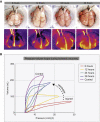The Cellular and Physiological Basis for Lung Repair and Regeneration: Past, Present, and Future
- PMID: 32243808
- PMCID: PMC7128675
- DOI: 10.1016/j.stem.2020.03.009
The Cellular and Physiological Basis for Lung Repair and Regeneration: Past, Present, and Future
Abstract
The respiratory system, which includes the trachea, airways, and distal alveoli, is a complex multi-cellular organ that intimately links with the cardiovascular system to accomplish gas exchange. In this review and as members of the NIH/NHLBI-supported Progenitor Cell Translational Consortium, we discuss key aspects of lung repair and regeneration. We focus on the cellular compositions within functional niches, cell-cell signaling in homeostatic health, the responses to injury, and new methods to study lung repair and regeneration. We also provide future directions for an improved understanding of the cell biology of the respiratory system, as well as new therapeutic avenues.
Copyright © 2020. Published by Elsevier Inc.
Figures





Similar articles
-
Repair and regeneration of the respiratory system: complexity, plasticity, and mechanisms of lung stem cell function.Cell Stem Cell. 2014 Aug 7;15(2):123-38. doi: 10.1016/j.stem.2014.07.012. Cell Stem Cell. 2014. PMID: 25105578 Free PMC article. Review.
-
Do lung remodeling, repair, and regeneration recapitulate respiratory ontogeny?Am J Respir Crit Care Med. 2001 Nov 15;164(10 Pt 2):S59-62. doi: 10.1164/ajrccm.164.supplement_2.2106064. Am J Respir Crit Care Med. 2001. PMID: 11734468
-
Cellular crosstalk in the development and regeneration of the respiratory system.Nat Rev Mol Cell Biol. 2019 Sep;20(9):551-566. doi: 10.1038/s41580-019-0141-3. Epub 2019 Jun 19. Nat Rev Mol Cell Biol. 2019. PMID: 31217577 Free PMC article. Review.
-
Cell-based therapies for lung disease.Br Med Bull. 2012;101(1):147-61. doi: 10.1093/bmb/ldr051. Epub 2012 Jan 25. Br Med Bull. 2012. PMID: 22279079 Free PMC article. Review.
-
Distinct stem/progenitor cells proliferate to regenerate the trachea, intrapulmonary airways and alveoli in COVID-19 patients.Cell Res. 2020 Aug;30(8):705-707. doi: 10.1038/s41422-020-0367-9. Epub 2020 Jun 30. Cell Res. 2020. PMID: 32606347 Free PMC article. No abstract available.
Cited by
-
Engraftment of wild-type alveolar type II epithelial cells in surfactant protein C deficient mice.Res Sq [Preprint]. 2024 Sep 13:rs.3.rs-4673915. doi: 10.21203/rs.3.rs-4673915/v1. Res Sq. 2024. PMID: 39315275 Free PMC article. Preprint.
-
Cell-intrinsic differences between human airway epithelial cells from children and adults.iScience. 2022 Oct 20;25(11):105409. doi: 10.1016/j.isci.2022.105409. eCollection 2022 Nov 18. iScience. 2022. PMID: 36388965 Free PMC article.
-
Exploiting the potential of lung stem cells to develop pro-regenerative therapies.Biol Open. 2022 Oct 15;11(10):bio059423. doi: 10.1242/bio.059423. Epub 2022 Oct 14. Biol Open. 2022. PMID: 36239242 Free PMC article. Review.
-
Single-Cell RNA-Sequencing Reveals Epithelial Cell Signature of Multiple Subtypes in Chemically Induced Acute Lung Injury.Int J Mol Sci. 2022 Dec 23;24(1):277. doi: 10.3390/ijms24010277. Int J Mol Sci. 2022. PMID: 36613719 Free PMC article.
-
Recent advances in tissue stem cells.Sci China Life Sci. 2021 Dec;64(12):1998-2029. doi: 10.1007/s11427-021-2007-8. Epub 2021 Nov 30. Sci China Life Sci. 2021. PMID: 34865207 Review.
References
-
- Alvarez D.F., Huang L., King J.A., ElZarrad M.K., Yoder M.C., Stevens T. Lung microvascular endothelium is enriched with progenitor cells that exhibit vasculogenic capacity. Am. J. Physiol. Lung Cell. Mol. Physiol. 2008;294:L419–L430. - PubMed
-
- Bertoncello I., McQualter J.L. Endogenous lung stem cells: what is their potential for use in regenerative medicine? Expert Rev. Respir. Med. 2010;4:349–362. - PubMed
Publication types
MeSH terms
Grants and funding
- T32 HL007586/HL/NHLBI NIH HHS/United States
- U01 HL134745/HL/NHLBI NIH HHS/United States
- F32 HL143931/HL/NHLBI NIH HHS/United States
- U01 HL134760/HL/NHLBI NIH HHS/United States
- R01 HL120046/HL/NHLBI NIH HHS/United States
- P41 EB027062/EB/NIBIB NIH HHS/United States
- U01 HL134766/HL/NHLBI NIH HHS/United States
- R01 HL142727/HL/NHLBI NIH HHS/United States
- F32 HL149263/HL/NHLBI NIH HHS/United States
- T32 HL007035/HL/NHLBI NIH HHS/United States
- K08 HL140178/HL/NHLBI NIH HHS/United States
- P30 ES013508/ES/NIEHS NIH HHS/United States
LinkOut - more resources
Full Text Sources
Medical
Miscellaneous

